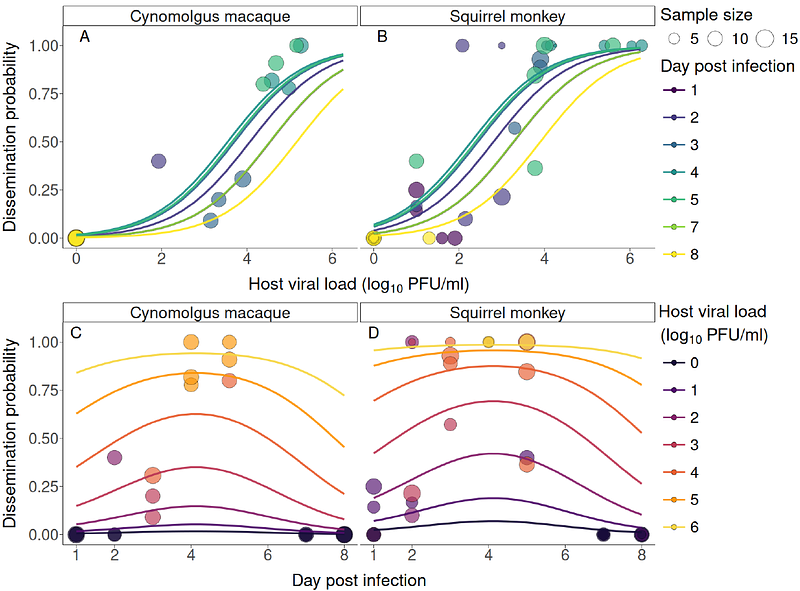Inside-Out: Modeling the link between Zika virus viral dynamics within hosts and transmission to vectors across host species and virus strains

Inside-Out: Modeling the link between Zika virus viral dynamics within hosts and transmission to vectors across host species and virus strains
Cecilia, H.; Althouse, B. M.; Azar, S. R.; Rossi, S. L.; Vasilakis, N.; Hanley, K. A.
AbstractEpidemiological models of mosquito-borne virus transmission often lack accurate estimates of host-to-vector transmission probability. Here, we estimated this probability for two strains of Zika virus (ZIKV)--one sylvatic and one human-endemic--from two monkey species to Aedes albopictus mosquitoes using experimental infection data. Viral dynamics did not differ between monkey species, although one (cynomolgus macaque) is a native ZIKV host and the other (squirrel monkey) a novel host, but differed between strains, with viremia for the human-endemic strain peaking later and lower than the sylvatic strain. Only the sylvatic strain was transmitted to mosquitoes. In mosquitoes, anatomical barriers influence viral progression to salivary glands, complicating host infectiousness estimation. We quantified the probability of viral dissemination to the legs in Ae. albopictus, which increased with host viral load and was higher after feeding on squirrel monkeys than on cynomolgus macaques. We also found a positive relationship between virus titer in mosquito legs and virus detection in saliva after a 14-day extrinsic incubation period. Combining these factors, we found that squirrel monkeys were on average 1.5 times more infectious to Ae. albopictus than cynomolgus macaques. These estimates will help assess ZIKVs potential to establish an enzootic, sylvatic cycle in the Americas.